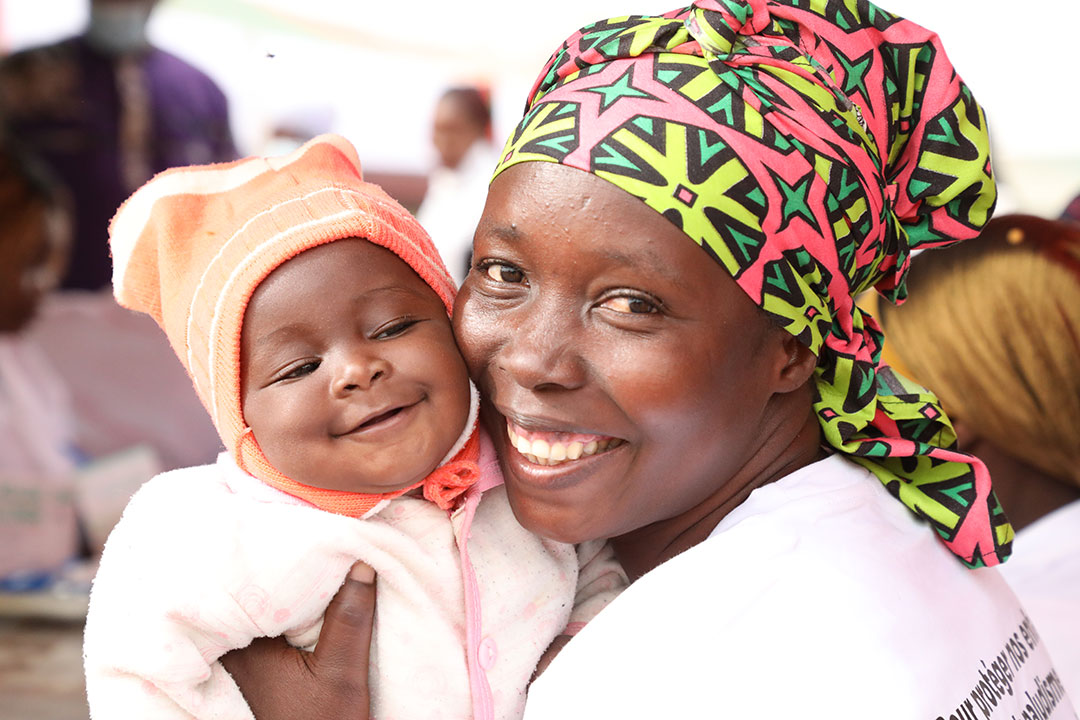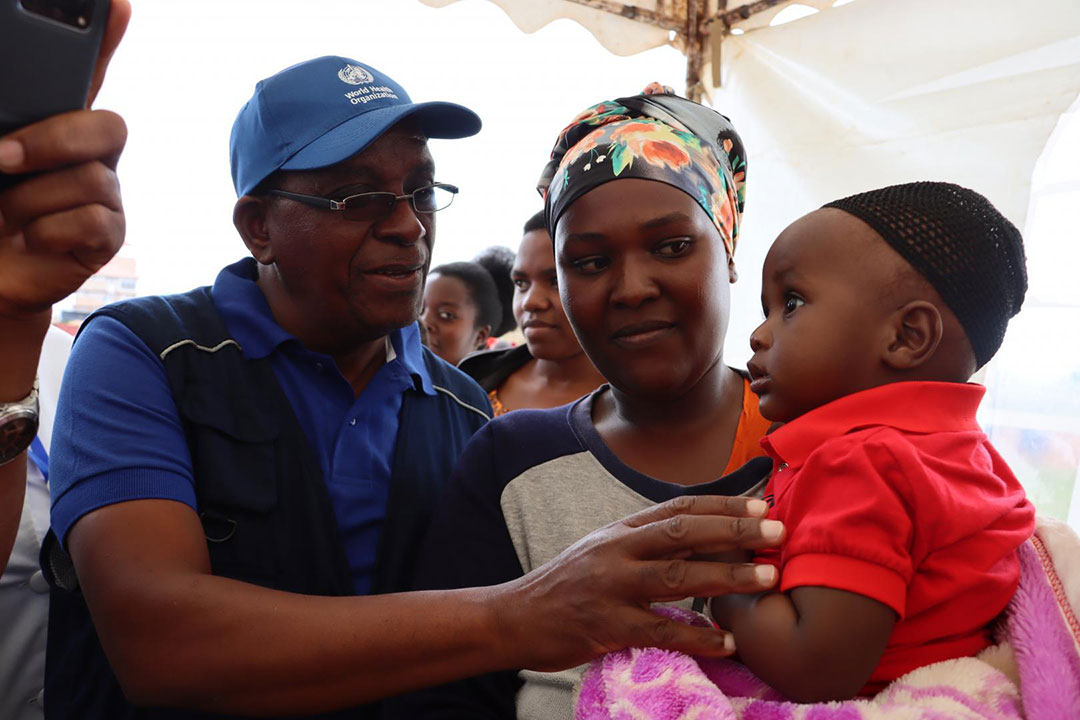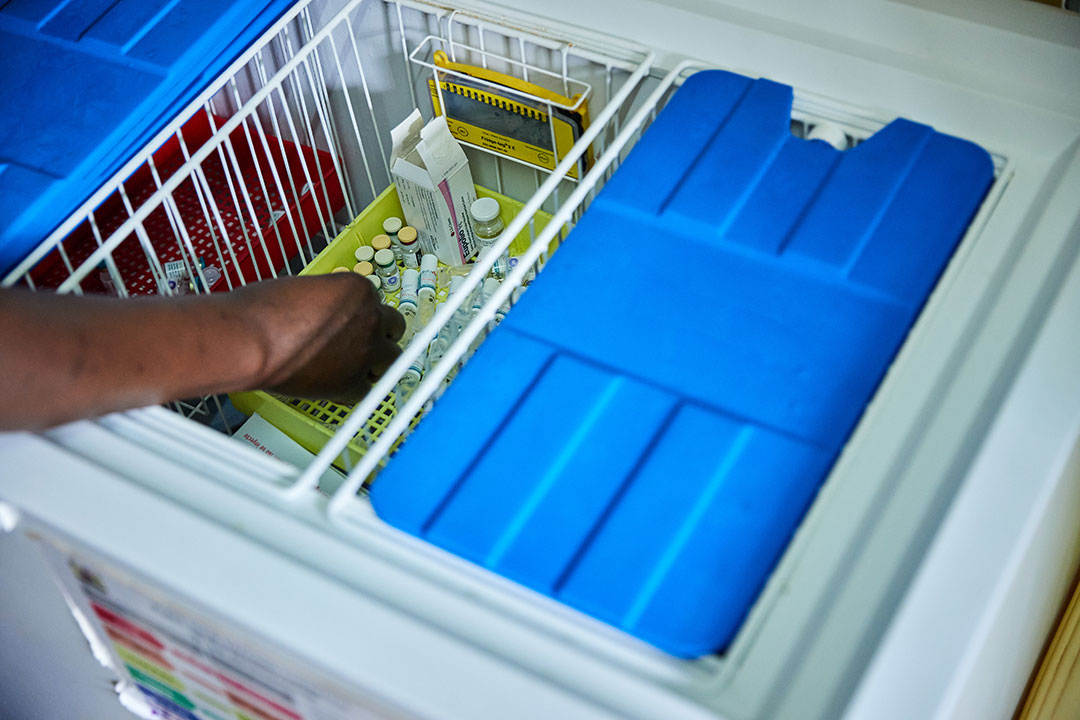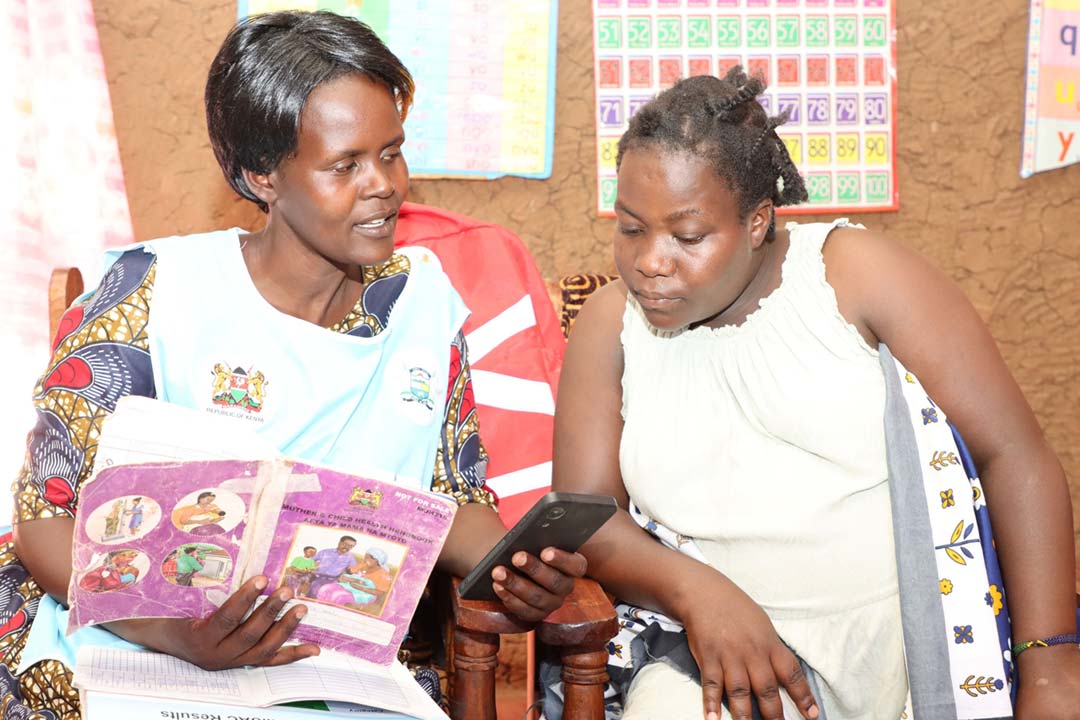The Future of Global Pandemic Security: Navigating shifting landscapes – a Gavi White Paper
The COVID-19 pandemic has demonstrated how ill-prepared health systems and societies are in the face of pandemic shocks and their protracted impact. Now, as global attention begins to shift towards improving the way we prevent and respond to future pandemics, what lessons learned, missing pieces and success stories can help us prepare for the next one?
- 26 November 2021
- 15 min read
- by Gavi Staff

Why do we need pandemic preparedness?
COVID-19 caught the world off guard; the speed at which it spread and the extent of its impact on people’s lives came as a great shock to most. However, many experts had long been warning about the risks of a new pathogen emerging and spreading across the global. Since the 1940s more than 330 emerging infectious diseases have been identified, of which 60% were zoonotic, meaning they originated in animals but jumped the species barrier to humans. Global trends such as climate change, population growth, changes in land use and urbanisation, human migration and rapid global travel are increasing the risk of humans coming into contact with such pathogens and making it easier for infectious diseases to spread beyond the place of their emergence. This means that COVID-19 is not an outlier event and that despite all the advances in science and medicine, the risk of pandemics is actually increasing. It’s not a question of if there will be a next pandemic threat, but when.
Normally it can take more than a decade for a newly developed vaccine to reach lower-income countries. With COVID-19, vaccines were being rolled out to them just 39 days after people in high-income countries got their first jab, thanks to COVAX and the Access to COVID-19 Tools Accelerator (ACT-A).
What is pandemic preparedness?
The risk of pandemics may be increasing, but that doesn’t make pandemics can't be prevented. Pandemic preparedness means: monitoring known pathogenic threats on an ongoing basis; detecting outbreaks of unknown threats quickly; preventing local outbreaks from escalating into epidemics or pandemics through a rapid and coordinated response at the subnational, national or international level; and building robust systems together with response and recovery plans to better protect people, stop transmission and mitigate any knock-on effects on societies and economies. What COVID-19 has made clear is that pandemic preparedness cannot be tackled at the domestic level, it is a global issue. With COVID-19, no nation was truly prepared and even the wealthiest nations were brought to their knees. Given the ease with which infectious diseases can spread and cross borders, it is not enough for some nations to be fully-prepared if others are not. If one part of the world is at risk, it threatens the entire world.
What are the gaps in pandemic preparedness?
In July 2021 the G20 High-Level Independent Panel published its report “A Global Deal for Our Pandemic Age” which highlights four critical gaps that need to be urgently fixed in our current pandemic prevention, preparedness and response systems: 1) Gaps in the global surveillance system – a lack of early warning systems at the global, regional and national level; 2) The need for resilient national systems – strengthening these systems would not be just for national benefit but must be viewed as global public good; 3) Limited supply capacity of medical countermeasures and tools – this includes global distribution of manufacturing capacities and supply chains, so that the system as a whole is resilient during crises; and 4) The need for strengthened global heath governance.
The following questions are intended as primers aimed at starting the conversations needed to find the best solutions to bridge these critical gaps, building on the lessons learned and successes identified during COVID-19, so that next time the world as a whole can be better prepared.
How do we create a more effective global early warning system?
With many infectious diseases, the early symptoms such as fever and fatigue are similar, making clinical diagnosis very difficult, and even more so with novel pathogens. While questions remain about the speed of the global response, the fact is with better global surveillance and more widespread genomic sequencing it is possible, or likely even, that this coronavirus could have been detected at a much earlier stage. If it originated in less populated rural regions, with better surveillance it should have been possible to detect it before it travelled to Wuhan and beyond. Infectious disease surveillance networks do already exist and were in place across the globe long before COVID-19. However, there is huge scope for improvement; they can be highly porous, disparate and of varying effectiveness. While many countries have strong surveillance, the largest gaps are often to be found in the poorest parts of the world. That’s because some of the areas of the world with the greatest biodiversity, and increased risk of new pathogens with pandemic potential emerging, have weak surveillance for both human and animal health.
During the 2014 West Africa Ebola epidemic, it took three months before the very first case, patient zero, was confirmed by a laboratory. This was partly due to limited laboratory facilities in the region, but also because the community in which patient zero lived was outside an efficient disease surveillance network. Creating a more effective global early warning system will involve increasing disease surveillance at the regional, national and sub-national levels, as well as improving diagnostic capacity and the availability and use of genomic sequencing to identify threats quickly. What now needs to be done to put this in place and ensure that critical information and data is shared, to guarantee the rapid detection and response to outbreaks? And how can this be done in such a way that there are closer links with zoonotic surveillance, which monitor infectious agents in animal populations?
What is our biggest disease surveillance blind spot?
Disease surveillance is critical for detecting pandemic threats, but it is next to impossible without primary health care (PHC). When people get sick, often the first point of contact they have with medical and health services is with PHC, making it an essential part in the early detection of diseases. However, in many parts of the world PHC is still very limited or even non-existent, not just in remote rural areas, but often also in dense urban slums. Even in middle-income countries, where health care provision can be relatively good, there can exist large clusters of communities that are missing out. When it comes to emerging infectious diseases, missed communities, such as people in remote rural areas, those living in dense urban slums or displaced communities, are our biggest concern and yet our least served blind-spots. These are communities that often have limited access to clean water and sanitation, usually live closest to undomesticated animals from which new infections so often emerge and who live in areas with missing diagnostics and disease surveillance facilities to detect and stop the spread of any newly emerged infection.
Have you read?
Expanded access to routine immunisation has a role to play in improving our global early warning system, because not only does it keep outbreaks of vaccine-preventable disease at bay, but it also serves as an important platform upon which stronger and more resilient PHC can be built. When a child or community gets access to childhood immunisation, it brings with it critical infrastructure and resources, from supply chain, cold storage, trained health care workers, data systems and surveillance. Therefore, expanding and improving access to routine immunisation not only prevents outbreaks of known diseases, but it also helps detect new ones by bringing PHC closer to the people that need it. So how can routine immunisation programmes and the building of more widely available and resilient PHC be incorporated into pandemic preparedness to make earlier detection and reporting possible?
What is the best way to stop outbreaks escalating into epidemics and pandemics?
Earlier detection of an outbreak at source can bring it under control and end it quicker, but to do so resilient national response systems need to be in place once the alarm bell has been sounded. As COVID-19 has shown, when an outbreak escalates into a pandemic, the increased pressure it can place on health systems can cause them to quickly buckle, even in the wealthiest and most well-resourced countries. This can impede the response to the pandemic, and, as we have seen, have devastating repercussions on other life-saving health services. With COVID-19, none of this was helped by the fact that most countries were slow to respond in the first place, and when they did, they often didn’t have or were unable to implement robust or rapid pandemic response plans in place that were globally coordinated. All this allowed the virus to spread with incredible ease and escalate into a global pandemic with breathtaking speed.
In many countries such domestic response plans and policies have since been under review as a matter of national priority, but how do we ensure that this occurs across the board, that global standards are in place and have the resources to be adequately implemented in all countries to help protect people and prevent outbreaks from escalating in the first place? This will be particularly challenging in the world’s poorest economies, many of which had weak health systems prior to the pandemic and were focused on responding to outbreaks of vaccine-preventable diseases, such as measles and polio, even before COVID-19. So, what additional support do countries that already face challenges in protecting people from preventable diseases need in order to respond quickly to stop the spread of novel ones?
How do we get vaccines, therapeutics and diagnostics quicker?
With COVID-19, the speed and the response from the scientific community and vaccine manufacturers has been incredible, breaking all records. From the moment the genome of the SARS-CoV-2 virus was published it took just 327 days for the first vaccine to be developed, tested and authorised for emergency use. Today there are 19 vaccines authorised, 110 in clinical trials and further 184 vaccine candidates in pre-clinical development. Nevertheless, for future pandemics we can and must get safe and effective vaccines, therapeutics and diagnostics quicker.
During this pandemic we have seen that years can be shaved off the normal amount of time it takes to develop and authorise vaccines. But how do we keep the momentum going, to ensure that essential pre-clinical and clinical research is carried out before a pandemic, to give us the best chance of developing safe and effective vaccines more quickly when a novel threat does arise? To what extent can research be done identify potentially important interventions and carry out trials in advance, in anticipation of future threats? During a pandemic the economic incentives are there to develop vaccines, therapeutics and diagnostics, but during peacetime it’s a different story. So how do we ensure there is adequate funding to carry out this critical research before there are any clearly defined economic incentives?
How do we get global access quicker?
Normally it can take more than a decade for a newly developed vaccine to reach lower-income countries. With COVID-19, vaccines were being rolled out to them just 39 days after people in high-income countries got their first jab, thanks to COVAX and the Access to COVID-19 Tools Accelerator (ACT-A). By early 2022 around 2 billion doses should have been shipped to 92 lower-income countries, those that would otherwise be unable to afford them. However, even though COVAX has demonstrated that it is possible to remove the financial barriers to access during a pandemic, along the way it and ACT-A have faced huge and ongoing obstacles that have delayed efforts to create rapid, fair and equitable access to essential vaccines, diagnostics and therapeutics. So how can we avoid that next time?
One of the biggest initial delays came from the fact that neither COVAX nor ACT-A existed prior to COVID-19. It took time to create them and then raise the funds needed to support their efforts. Moreover, despite receiving the backing of 194 governments, COVAX has repeatedly been deprioritised by manufacturers and found itself at the back of the line, behind potentially more profitable bilateral deals with governments. So how do we ensure that funding is available immediately in the event of a future global health crisis, such that agencies can pivot to mount a rapid global response, and make sure the right investments are sustained between crises so that they can have best and most immediate impact? And how can we ensure that the global response is treated as a global priority that cannot be undermined by the individual actions of governments and manufacturers?
What would a global pandemic preparedness institution do during peacetime?
Despite the fact that no one was prepared for COVID-19 and that agencies weren’t set up to respond to a global health crisis on this scale, COVAX and ACT-A have demonstrated that we do in fact already have in place the pieces needed to mount a global response. From the scaling up of vaccine manufacturing capacity and accelerating the development and approval of vaccines, to putting in place the financial mechanisms and infrastructure needed to deploy them, this has all been achieved at record speed. Not only has the latter involved securing doses and ensuring the supply chains, cold storage facilities, health care workers, data and monitoring systems are in place, but also the necessary liability, indemnification and compensation safety nets, without which access would have been further delayed.
This was made possible by taking an approach that draws on the pre-existing strengths of stakeholders, putting to use their expertise, resources and infrastructure, as and when needed, to mount an unprecedented global response. In a post-COVID world, how can we ensure that none of the invaluable experience and knowledge that made this possible is lost and can be put to immediate use when the next pandemic strikes? Do we now need to create a global institution for pandemic preparedness with a clear mandate that encompasses all these elements, or is there another more cost-effective and efficient way to capture this networked approach without creating duplication in the global health architecture and which doesn’t sit idle during between periods of crisis?
How do we prevent vaccine hoarding and export bans?
By far, the biggest impediment to the COVID-19 global pandemic response has been the widespread acts of vaccine nationalism and hoarding by wealthy nations. While all governments have a responsibility to prioritise the protection of their citizens, during a pandemic that also means ensuring that people elsewhere are protected. Yet, repeatedly we have seen the actions of individual governments undermining the global effort, either directly or indirectly. This has led to gross inequities in global vaccine distribution with some of the wealthiest countries having vaccinated over two-thirds of their populations, while just 1.8% of people in low-income countries have received their first jab. This not only serves to prolong the pandemic by allowing the virus to continue to spread, but it increases the chances of new variants emerging that are more dangerous.
For future pandemics how can well-resourced governments be encouraged not to always place national interest over the global good during times of crisis? Do we need new international treaties to prevent this in future, or could the World Trade Organization put an end to export bans during a pandemic? Would such measures even be effective? Or do we instead have to assume that governments will always behave this way and instead require manufacturers producing pandemic vaccines, therapeutics and diagnostics, to be required to ringfence or reserve a proportion to go towards the global effort, for countries that cannot afford to pay or do not have mechanisms to access them? Or perhaps we need both?
What is the most cost-effective way of funding pandemic preparedness?
It is clear that one of the biggest hindrances during COVID-19 was a lack of funding at the early stages. This is true across the board, from a lack of investment in infectious disease surveillance, to national response plans, funding and resources to help health systems and global health agencies pivot to cope with the crisis and in the development and scaling-up manufacturing, to produce the volumes of vaccines required. While fundraising during a crisis is less than ideal, and while there is clearly a need for a more coordinated approach to funding global pandemic preparedness, what is the best way to do this?
At a time when the global economy has already been hit badly and the focus is on rebuilding, does it make sense to pour money into a central fund that could potentially sit idle for years? Do we need a new global pandemic funding mechanism, and if so can we ensure that this does only add another layer of bureaucracy that ultimately creates unnecessary delay when rapid response is needed? Could funds be better spent on preventing outbreaks and escalation in the first place? Is there a way spread the cost of pandemic preparedness and response, frontloading long-term government commitments so funds so they are available when they are needed, an approach that been used very successfully for routine immunisation by the International Finance Facility for Immunisation (IFFIm). While we clearly need to have funding available for the next pandemic would it be more effective and cost-effective to achieve this through contingency pledges to global agencies that are only triggered when disaster strike, enabling them to respond quickly?
How do we ensure there are enough doses in a crisis, without factories sitting idle during peacetime?
With several times more doses of COVID-19 vaccine required than are normally produced for all vaccines in a given year, there is clearly a need to find a way to increase manufacturing capacity during a crisis. One way this has been handled during this pandemic is through technology transfers, where manufacturers share their intellectual property and vital know-how with other manufacturers, so that greater volumes can be produced. While this has been hugely successful during COVID-19, the fact remains that there are still only a limited number of manufacturing facilities in the world. Moreover, they are predominantly concentrated in the global north, which has played into vaccine hoarding through export bans, hindering equitable access. So clearly there is a need to increase global manufacturing capacity and achieve greater geographical diversity, so that all regions have access.
But while there is a need for huge volumes during a pandemic, who will pay for the manufacturing facilities to meet this surge of huge demand? Given that a vaccine production facility can cost in excess of half a billion dollars to build, for manufacturers there is no business model; if there is a chance that these facilities would sit idle between crisis, it would simply be too risky. And if paid for with public funds, would this even be the most cost-effective use of funds? Instead is there a case to transfer technologies and build facilities that are geared primarily towards increasing the supply of non-pandemic vaccines, those used in routine immunisation programmes, but in such a way that the facilities could quickly be pivoted towards the production of pandemic vaccines and expanded when needed?
More from Gavi Staff
Recommended for you









